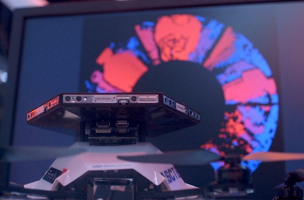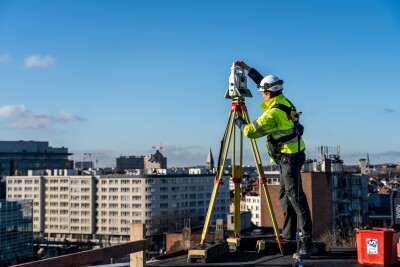AscTec Firefly with obstacle-avoidance featuring Intel RealSense cameras. Photo source: The Verge
Just over a month ago, someone working within the UAV industry told me that if we could perfect obstacle-avoidance and location-reporting technologies for UAVs, it could make any potential rules restricting UAV use to line of sight totally moot. After all, why keep the UAV in your sight if you can program its flight path and the UAV can avoid collisions all by itself?
At the time (remember, this was just 4 weeks ago), we had no way of predicting just how quickly those technologies would arrive. As of last week, working examples of both location-reporting and collision-avoidance technology have been announced.
PrecisionHawk, for one, announced its LATAS (Low Altitude Tracking and Avoidance System) solution for UAVs on January 10th at the Academy of Model Aeronautics Expo. According to the company, the system has the ability to provide flight planning, tracking, and avoidance for all UAVs in the sky. It requires nothing more than existing cellular networks to operate.
This system, which takes the form of a chip small and light enough to be included in a UAV’s circuit during manufacturing, would allow UAV operators to verify the safety of their proposed flight paths and automatically report those flight paths back to the FAA. It would allow you to fly your UAV out of your line of sight without worrying about crashing it into other aircraft–including, I assume, UAVs.
See also Ascending Technologies, which has partnered with Intel to use Intel’s Realsense 3D sensors in an obstacle-avoidance system for small UAVs. When Intel demonstrated the system at the consumer electronics show, the UAV backed itself away from people when they approached it. It also made its way through an obstacle course without incident.
The main benefit of this system is its size: The RealSense camera itself is only 4mm thick and so could be placed on theoretically any UAV.
Such technology could help you to inspect a bridge without worrying about running your drone into the bridge’s underside. It could allow you to send your UAV out of your line of sight without worrying that it would crash into a tree.
If a UAV can avoid other aircraft and all obstacles, what’s the sense of restricting its use to line of sight?
It is an odd fact worth mentioning that this particular obstacle-avoidance breakthrough came from an unlikely source: consumer technology. It’s true, we’re accustomed to consumer toys driving our expectations for what commercial technologies should do. This is one of the rare occasions where consumer technological developments might actually infiltrate the 3D measurement marketplace.
In an article on The Verge, Chris Anderson, CEO of 3D Robotics is quoted as saying that “the semiconductor giants are throwing billions of dollars of research and [production]capacity at problems we, the drone industry, need solved. So between Qualcomm’s work on real-time vision built into their Snapdragon program and Intel’s work on RealSense vision, which is a standalone chip, those things are now going to be driving next year’s drones, and they are going to be available at a cost and speed that we, the drone industry, could never have done on our own.”
With Intel and Qualcomm onboard, developing better and smaller 3D-sensing technologies, who can even guess what’s next for the humble UAV? Or what’s next for 3D measurement, for that matter?






